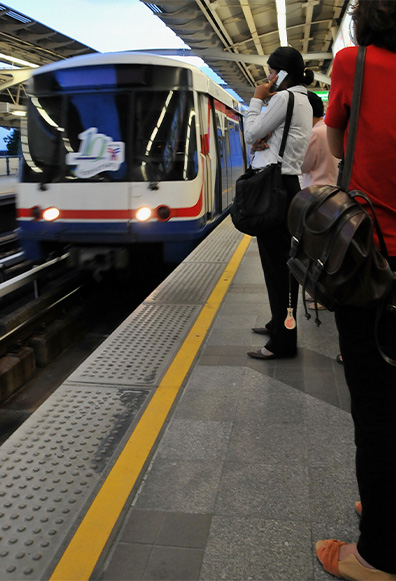Countries:
Thailand
Status:
Completed
Sector:
Mobility
Making policy recommendations to electrify the urban transport system in Nakhon Ratchasima to support its low-carbon transition.
In 2017, the transport system of the City of Nakhon Ratchasima (CNR) was the second largest contributor to the city’s greenhouse gases (GHG), with road transport contributing about 84%. Heavy reliance on road transport has led not only to high emissions, but also to low air quality and poor road conditions in the city. In addition, gender and social inclusion (GESI) considerations like user accessibility and safety were often not considered in the design of the current CNR transport system.
In this context, the project undertook analysis of the city’s current transport system and consulted users to understand the issues faced by vulnerable groups to develop a design for a low-carbon and more inclusive transport system for CNR. The results of this analysis, along with stakeholder engagement, were used to develop recommendations for policymakers on the strategy and design for the full electrification of the transport system. This system would improve access for all users, reduce traffic jams, and improve air quality while delivering reduced carbon emissions. The project also addressed capacity gaps and trained key stakeholders to enhance their ability to implement the recommendations and transform the urban mobility system.
“The result from the project is informative to CNR’s transition toward a low carbon and sustainable city. In particular, the results would guide CNR’s decision making in policy matters and practical ways to form cooperation between public and private sectors.”
Mr. Chatree Wongwiboonsin
Deputy Mayor of Nakhon Ratchasima Municipality

made to implement an electrified urban transport system, based on extensive contextual analysis of CNR
proposed as part of the new CNR electrified urban transport system
by the Nakhon Ratchasima City Municipalit for the CNR electrified urban transport system
in a capacity building session on “electrifying urban mobility: from engineering design to policy formulation”
The project analysed the CNR context across four key aspects:
This analysis formed the basis to develop a set of policy recommendations that supported policymakers’ decision-making. The recommendations included a proposal for five electrified urban transport routes and 33 stations which could generate £67.2M in profit, reduce 43,000+ tons of CO2e, and improve air quality by 41% by 2042 compared to 2021). One route has already been approved as a pilot by the CNR Municipality. To support the implementation of the recommendations, the project held a capacity building session, training 52 people on the project development process, integration of GESI, public transport design and feasibility, and law and regulations.
The recommendations also highlighted three key areas to be considered. Firstly, the construction phase of an electrified urban transport system should account for the travel inconvenience of local people. Secondly, both public and private finance will be required to meet the capital required to implement the recommendations. Finally, acquiring the land for the construction is critical, with five different options outlined.
to identify relevant stakeholders from marginalised groups and ensure inclusive representation in consultations
as a platform for marginalised groups to express their views through interviews, workshops and focus groups
into mathematical, scientific and economic modelling, with results fed directly into policy formulation
into policy recommendations, such as considering accessibility issues in the design of transport routes and stations
The team undertook a stakeholder mapping process to identify key marginalised groups in CNR. These groups were able to actively participate in the project through public hearings, workshops, focus groups, interviews and surveys, allowing them and identify important 'public transport user' factors. 53% of interviewees were women, while around half of those involved in focus groups represented marginalised groups. Representatives from groups like the Korat Disabled Persons Association also attended the project workshop.
Key factors identified were safety, accessibility, comfort and affordability. For example, one key marginalised group is people with disabilities, who identified the need for low floors on buses, ramps at bus stops, and audio and visual signals to assist with use of the transport system. The suggestions were embedded into the design of routes and stations, ensuring the project adopted a ‘Transport for All’ concept. As part of this, the project team identified four key GESI-focused areas for action:

The project team provided recommendations and lessons to support the implementation of electrified urban systems in CNR and other cities/regions, including:
Report including technical recommendations for introducing an electrified urban transport system in CNR
View PDFUK PACT (Partnering for Accelerated Climate Transitions) is a unique capacity-building programme. Jointly governed and funded by the UK Government’s Foreign, Commonwealth and Development Office (FCDO) and the Department for Energy Security and Net Zero (DESNZ) through the UK's International Climate Finance, it works in partnership with countries with high emissions reduction potential to support them to implement and increase their ambitions for tackling climate change.
© Copyright 2025 UK PACT Privacy Notice Cookie Policy